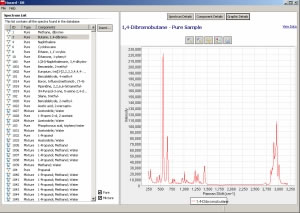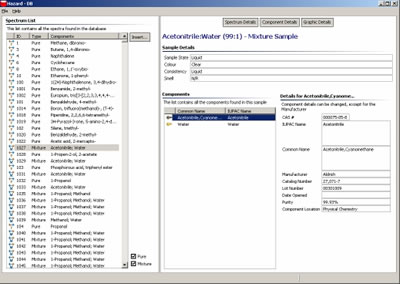-
Courses

Courses
Choosing a course is one of the most important decisions you'll ever make! View our courses and see what our students and lecturers have to say about the courses you are interested in at the links below.
-
University Life

University Life
Each year more than 4,000 choose University of Galway as their University of choice. Find out what life at University of Galway is all about here.
-
About University of Galway

About University of Galway
Since 1845, University of Galway has been sharing the highest quality teaching and research with Ireland and the world. Find out what makes our University so special – from our distinguished history to the latest news and campus developments.
-
Colleges & Schools

Colleges & Schools
University of Galway has earned international recognition as a research-led university with a commitment to top quality teaching across a range of key areas of expertise.
-
Research & Innovation

Research & Innovation
University of Galway’s vibrant research community take on some of the most pressing challenges of our times.
-
Business & Industry

Guiding Breakthrough Research at University of Galway
We explore and facilitate commercial opportunities for the research community at University of Galway, as well as facilitating industry partnership.
-
Alumni & Friends

Alumni & Friends
There are 128,000 University of Galway alumni worldwide. Stay connected to your alumni community! Join our social networks and update your details online.
-
Community Engagement

Community Engagement
At University of Galway, we believe that the best learning takes place when you apply what you learn in a real world context. That's why many of our courses include work placements or community projects.
Analyze-IQ
machine learning software
|
|
Introduction:
Analyze-IQ is a machine-learning based software package to analyze data from spectroscopic techniques such as Raman spectroscopy. For Forensic applications it will simplify and automate the process of identifying illegal narcotics, hazardous materials, explosives, and/or trace evidence. The software learns to recognize the presence (and quantity) of a target analyte in complex mixtures, yielding more accurate results than conventional chemometric methods.
Existing spectral analysis software packages that are used for identification use relatively basic spectrum-matching for comparing the spectrum from an unknown sample with those of known pure materials that are available in digital databases. Such packages do not work well when the substance being analyzed is composed of a complex mixture of compounds (for example, a narcotic cut with diluents). Analyze-IQ uses patented machine-learning algorithms to overcome this problem, by developing dedicated models for high value analytes such as illegal narcotics.
The Analyze-IQ team comprised of Dr. Alan Ryder, Chemistry Department, Dr. Michael Madden, IT Department, Dr. Kenneth Hennessy, and Dr. Tom Howley (up to 2007).
This project was funded by Enterprise Ireland under the following grants:
“Hazard-IQ: Intelligent Quantification of Raman Spectral Data for Hazardous and Illicit Substances” Enterprise Ireland Technology Development Grant (TD/03/212), Commercialisation Plus supplement, 2007.
“Hazard-IQ: Intelligent Quantification of Raman Spectral Data for Hazardous and Illicit Substances” Enterprise Ireland Technology Development Grant (TD/03/212), 2003-06.
The NBL is no longer involved with this project.
Analyze-IQ:
The Analyze-IQ software package is a spectral analysis tool that uses advanced machine learning (and includes some chemometric methods) algorithms for both classification (ID) and quantification tasks in industry and research. The main goal behind the software is to tackle analysis problems in complex mixtures such as those encountered in law enforcement and healthcare.
The prototype version included two novel machine learning methods (patent submitted) that are significantly better than conventional chemometric methods (data to be published soon).
The Analyze-IQ package is fully integrated with the database and so allows the user the freedom to study very large and complex datasets such as those encountered in PAT, forensic, and biomedical applications.
The software is now commercially available from Analyze-IQ.
Hazard-DB:
| Hazard-DB is a spectral database package that will be available as a standalone or with ~2000 Raman spectra. Hazard-DB has been designed from the ground up to accommodate mixtures, unlike most other spectral databases which only contain pure materials. The ability to incorporate mixtures and to index the components (by CAS number etc.) is important for many different applications where mixtures are always encountered. The database is also fully integrated with the Analyze-IQ package so that data can be extracted from the database to build very robust identification models. These robust identification models can then be used for example to provide more accurate identification of cocaine containing samples or the presence of solvents in water. | |
|
The screenshot above shows the Hazard-DB GUI, with spectra listings on the left and the Raman spectrum on the right.
The screenshot above shows the display panel for the sample information, in this case a mixture. |
References:
- The effect of principal component analysis on machine learning accuracy with high dimensional spectral data. T. Howley, M.L. O’Connell, M. Madden, and A.G. Ryder, Knowledge-Based Systems, 19(5), 363-370, (2006).
- Qualitative and quantitative analysis of chlorinated solvents using Raman spectroscopy and machine learning. J. Conroy, A.G. Ryder, M.N. Leger, K. Hennessey, and M.G. Madden. Proc SPIE Int. Soc. Opt. Eng ., 5826, 131-142, (2005). [ full paper]
- Classification of a target analyte in solid mixtures using principal component analysis, support vector machines and Raman spectroscopy, M. O'Connell, A.G. Ryder, M.N. Leger, T. Howley, and M.G. Madden. Proc SPIE Int. Soc. Opt. Eng., 5826, 340-350, (2005). [ full paper]
- An improved genetic programming technique for the classification of Raman spectra. K. Hennessy, M. G. Madden, J. Conroy, and A.G. Ryder. BCS Conference Series, Applications and Innovations in Intelligent Systems XII, Proceedings, 181-192, (2005). Springer, ISBN 1-85233-908-X.
- Combining Genetic Algorithms, Neural Networks and Wavelet Transforms for Analysis of Raman Spectra. K. Hennessy, M.G. Madden, and A.G. Ryder, Proceedings of the 15th Irish Conference on Artificial Intelligence & Cognitive Science, Sept. 2004. [ full paper]
- Machine Learning Methods for Quantitative Analysis of Raman Spectroscopy Data, M.G. Madden and A. G. Ryder, Proc SPIE vol. 4876, 1130-1139, (2003). [ Abstract]

















